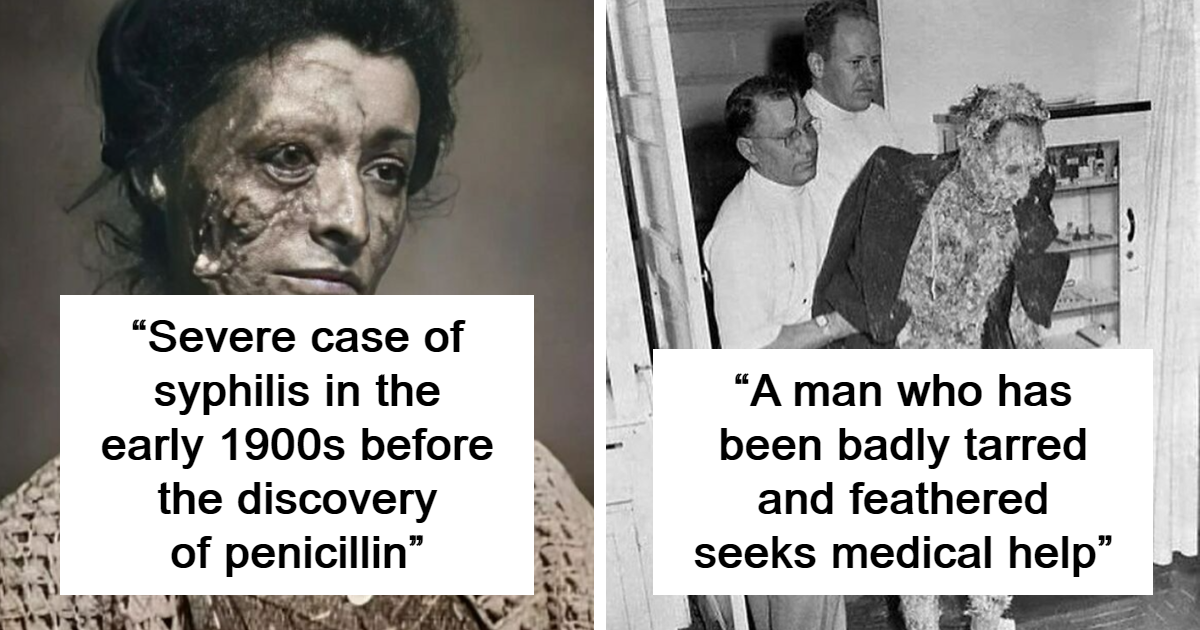Learning history can be fascinating. But history books don’t always have all the information. Some interesting nuggets and fun facts can slip through the cracks and we miss out on intriguing historical facts.
Luckily, there are pages like the History Everyday account on Instagram. It’s a place for rarely-seen but fascinating historical pictures. With its 354k followers, their mission is to encourage discussion and debate about iconic and controversial historical events. Curious to see what a Mongolian shaman looks like and what is “The Descent of Mombrone?” Scroll down and see for yourself!
To know more about learning the lesser-known facts of history, Bored Panda reached out to the creators of Footnoting History, a podcast that focuses on overlooked and underappreciated areas of history. We chatted with Christine Caccipuoti and Kristin Uscinski about how they find overlooked historical moments and why they’re so important. Read their insights below!
#1 Irena Sendler (1910-2008) Helped Smuggle Jewish Children Out Of The Warsaw Ghetto During Ww2, Providing Them With False Identity Documents And Shelter With Willing Polish Families Or In Orphanages And Other Care Facilities, Saving Those Children From The Holocaust
The German occupiers suspected Sendler’s involvement in the Polish Underground and in October 1943 she was arrested by the Gestapo, but she managed to hide the list of the names and locations of the rescued Jewish children, preventing this information from falling into the hands of the Gestapo. Withstanding torture and imprisonment, Sendler never revealed anything about her work or the location of the saved children. She was sentenced to death but narrowly escaped on the day of her scheduled execution, after German officials were bribed to obtain her release.
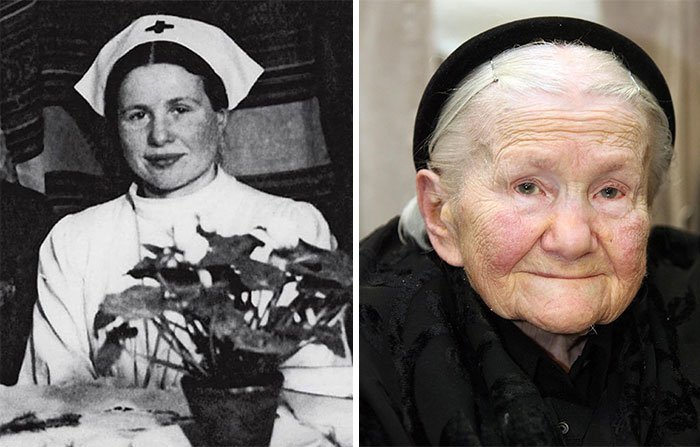
Image credits: historyfromeveryday
#2 Marilyn Monroe Visiting Injured Troops In Japan In 1954. This Soldier Had Broken His Back And Had To Lie Face Down During The Initial Recovery Phase
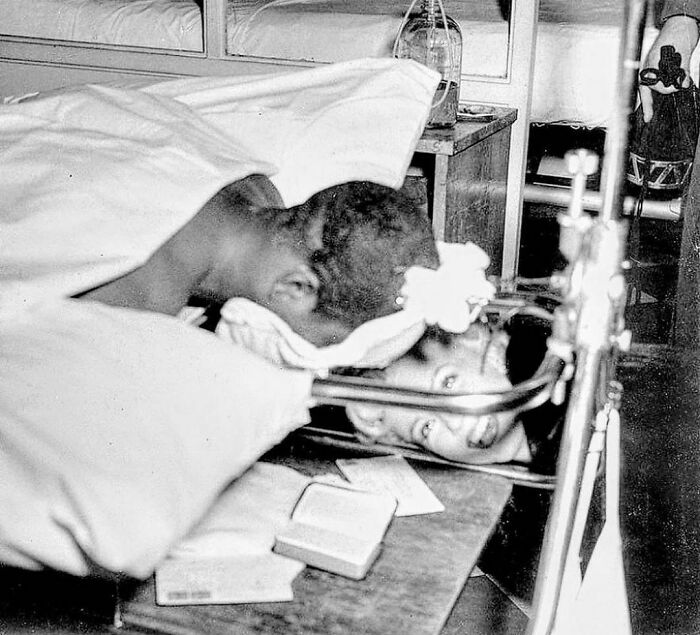
Image credits: historyfromeveryday
#3 The Exact Moment When 5 Year Old Harold Whittles, Born Deaf, Hears For The First Time After Being Fitted With A Hearing Aid
At that precise moment, photographer Jack Bradley froze the scene in a frame from behind the lens. The photo was published in the February 1974 edition of Reader’s Digest, in the article “Unforgettable moments caught on film”.
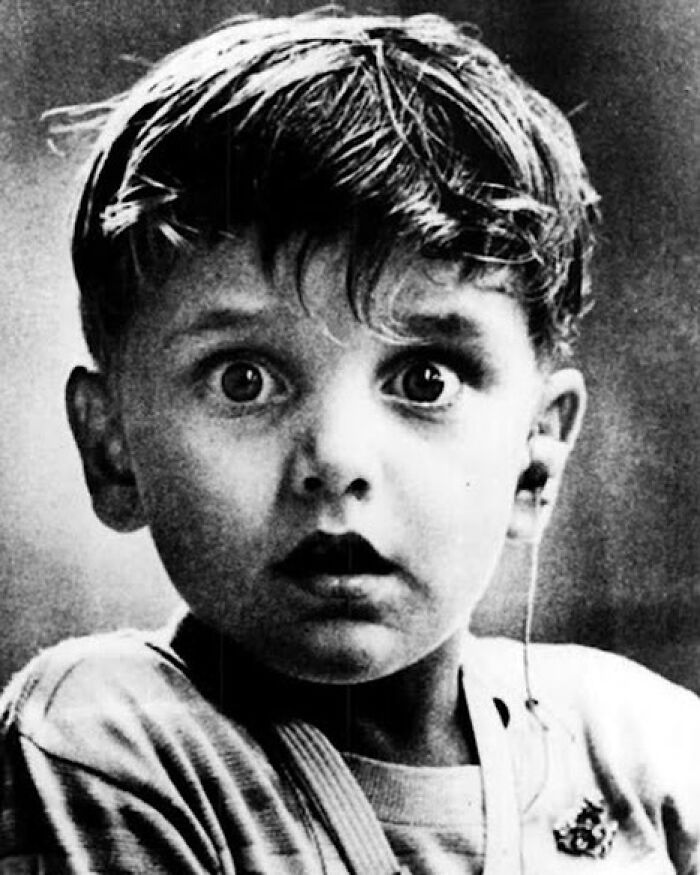
Image credits: historyfromeveryday
Kristin and Christine, the creators of Footnoting History, are both professional historians, both with degrees in Medieval History. In the podcast, they cover the lesser-known history facts that excite them, in the hopes that they will be exciting to their audience as well.
The team at Footnoting History has covered such topics as the Jumping the Rope wedding tradition and how archaeologists reconstructed the face of 11-year-old Myrtis from Ancient Athens. Christine and Kristin told us how they find these unknown nuggets of history for their podcast. “If you keep your eyes open, hidden and overlooked historical moments are everywhere!,” they told Bored Panda.
#4 Iranian University Students Before The Islamic Revolution, 1971
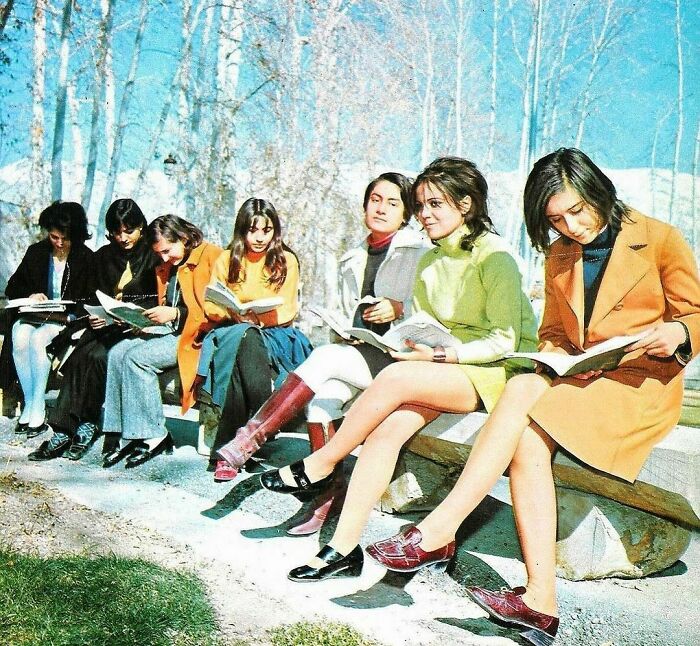
Image credits: historyfromeveryday
#5 The Top Photo Shows Heart Surgeon Dr. Zbigniew Religa Resting After Performing The First Successful Heart Transplant In Poland In 1987, Which Took 23 Hours
His assistant can be seen sleeping in the corner. The bottom photo shows the still living patient, Tadeusz Zitkevits, 25 years later. The patient died in 2017, 30 years after the surgery and outliving Dr. Religa who gave him a new heart (he passed away in 2009).
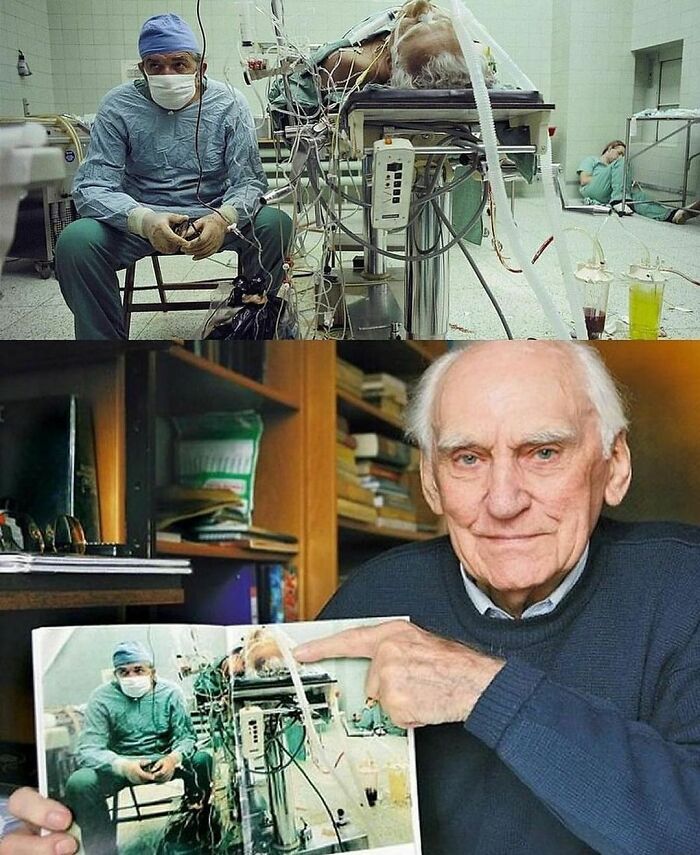
Image credits: historyfromeveryday
#6 Inuk Man Teaches A Boy How To Shoot A Bow And Arrow, Circa 1920
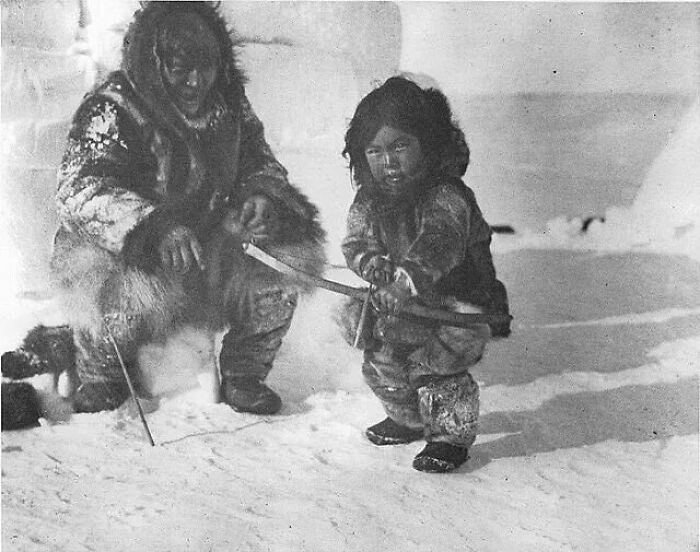
Image credits: historyfromeveryday
The pair believes we can find interesting but overlooked historical moments by simply being curious and asking questions like “Who lived in my city in the past?” “Who is responsible for building this castle or house?” “Why did an author in the past write this story?” “How did people in the past handle this sort of task?”
“Everything we do today has a history,” the pair says. “So, as long as you approach your current life by asking who/what/when/where/why you will come across history that probably doesn’t always get discussed.”
#7 On 23rd August, 1989, 2 Million People In Lithuania, Estonia And Latvia Held Hands And Formed A Human Chain 675.5 Kilometers (420 Miles) Long
Protesting against Soviet oppression and their desire to escape communism.
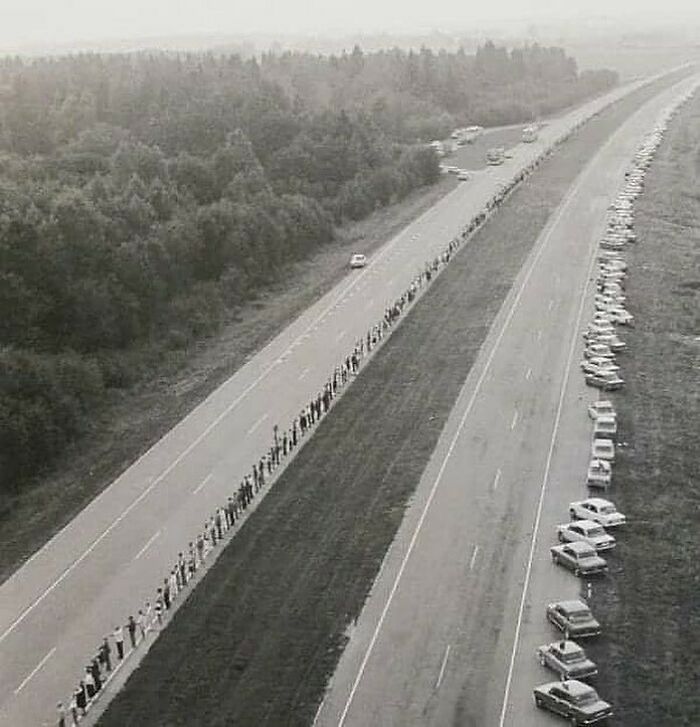
Image credits: historyfromeveryday
#8 A Blind Muslim Named Muhammad Carrying His Best Friend, A Paralyzed Christian With Dwarfism Named Samir, In Damascus, 1889
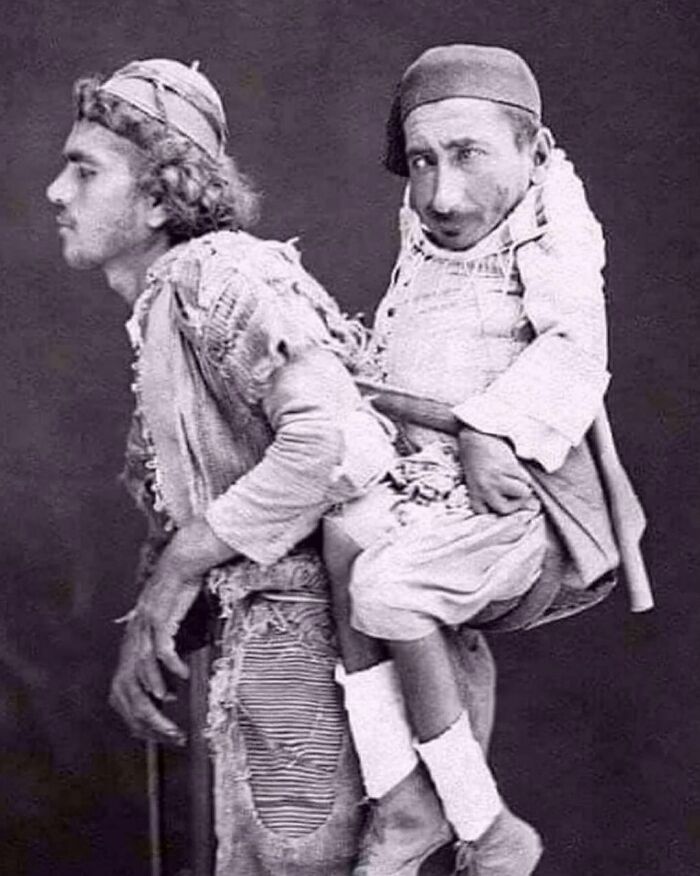
Image credits: historyfromeveryday
#9 George And Willie Muse, Two African American Brothers Who Were Kidnapped As Children In 1899 And Forced To Perform As Sideshow Attractions Because They Were Albinos
George and Willie were prevented from contacting their family by their manager, who kept them as modern day slaves, since they were unpaid. The two boys were told that their mother Harriet was dead – a lie, as their mother was still alive and was constantly searching for them. She eventually found the two boys working for the Ringling Brothers Circus and their family was reunited. Harriet successfully sued Ringling Brothers for the treatment of George and Willie. George Muse died of heart failure in 1972 while Willie carried on until 2001 when he died at the age of 108.
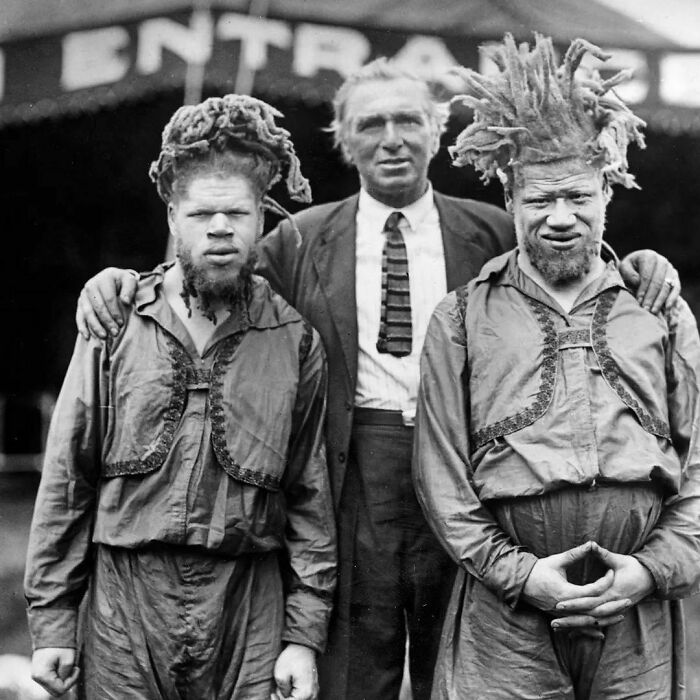
Image credits: historyfromeveryday
Sometimes, historical dramas or novels can push people to know more about the characters they’re watching/reading about. This happened to Christine, for example. As a fan of Sharon Kay Penman’s novels, she decided to pursue her Master’s degree in Medieval History.
#10 The O’halloran Sisters Who Fended Off The Officers Evicting Their Family During The Irish Land War, 1887
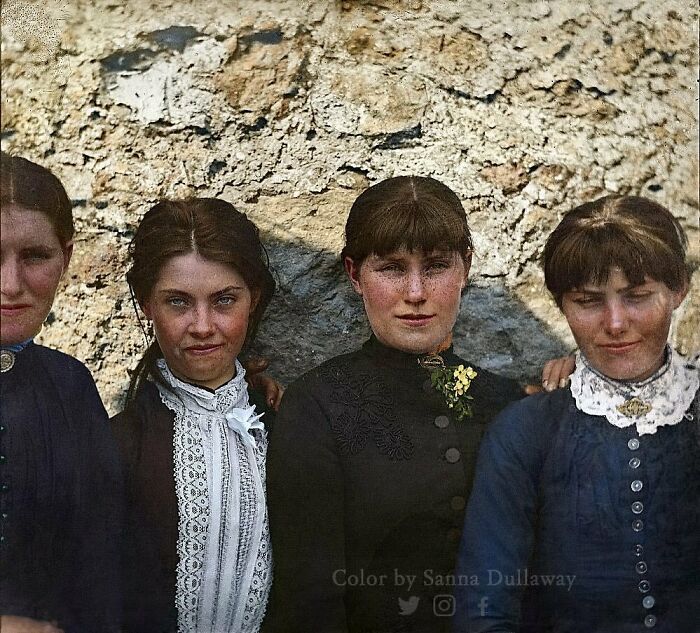
Image credits: historyfromeveryday
#11 Severe Case Of Syphilis In The Early 1900s Before The Discovery Of Penicillin, Which Would Become The Main Treatment
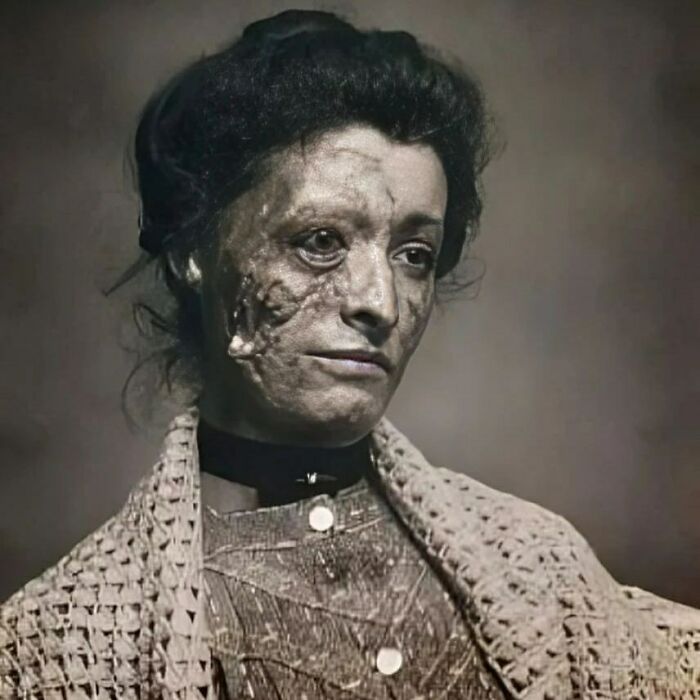
Image credits: historyfromeveryday
#12 Princeton Sophomores Pose For A Photo After A Snowball Fight In 1893
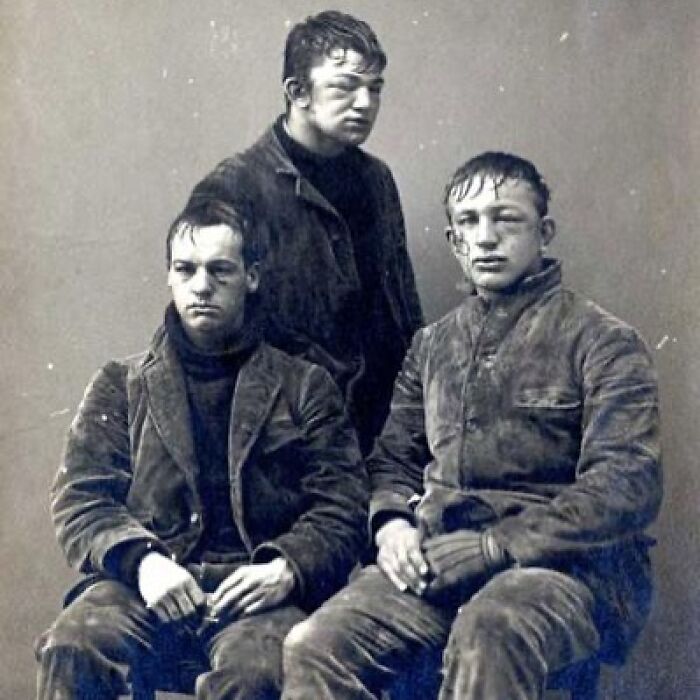
Image credits: historyfromeveryday
“If you’ve got an interest in historical dramas or historical novels, definitely look up the real events and people that inspire them,” the creators say. “Often, things that are dramatized are even more dramatic in real life. And, if you are already reading history books – always check the footnotes and endnotes.”
#13 Bedouin Mother From Saudi Arabia In 1948
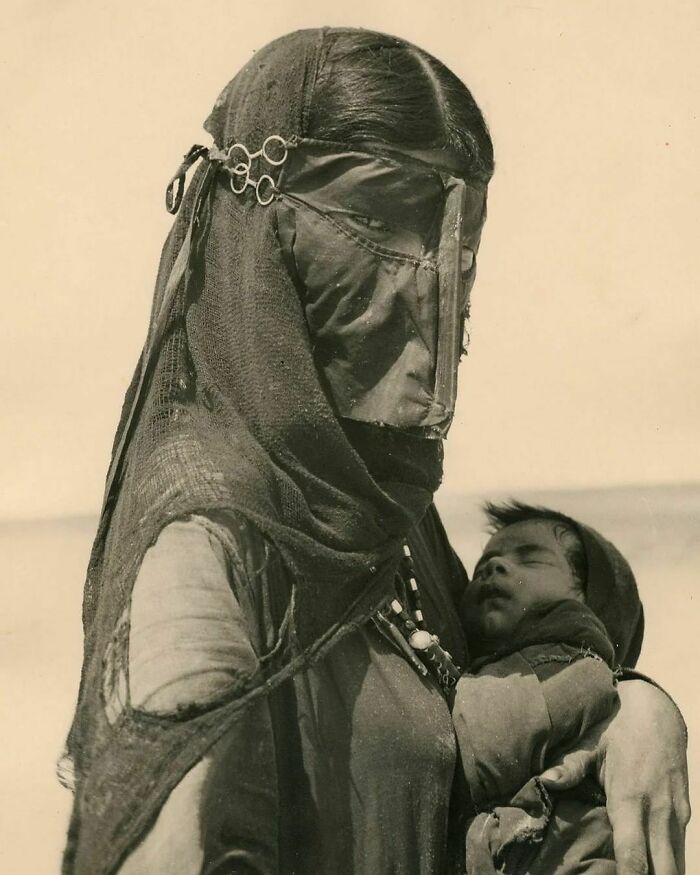
Image credits: historyfromeveryday
#14 A Heart Breaking Moment, Saved In An Ss Picture, Of Hungarian Jews At Auschwitz II-Birkenau
It was taken nearly 80 years ago, most likely in late May 1944. A little child found a dandelion in the grass and is handing it or showing it to an older boy. All the people in this picture were waiting to be k*lled by the gas chambers. They were m*rdered some time later.
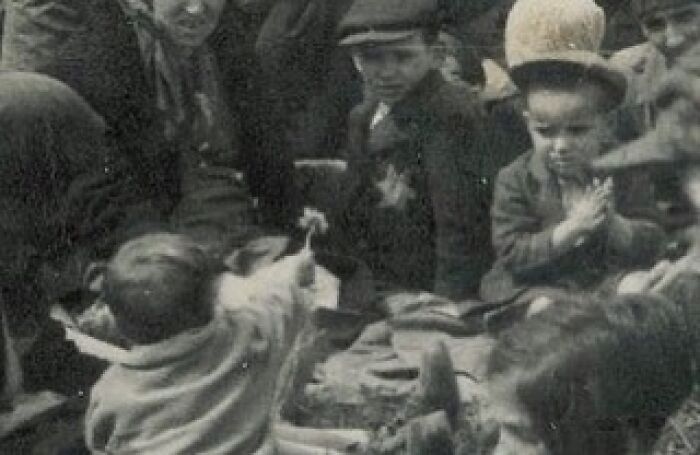
Image credits: historyfromeveryday
#15 Māori Woman With Her Son In 1890s New Zealand
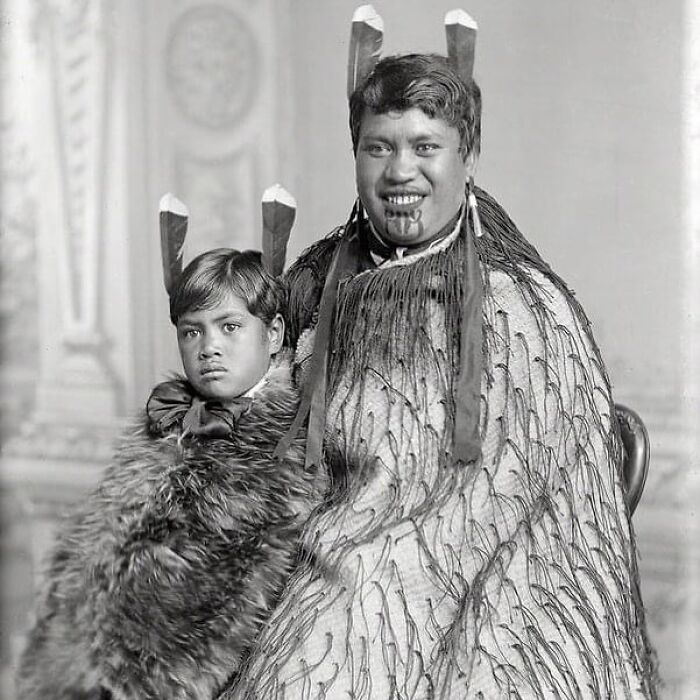
Image credits: historyfromeveryday
“Often, historians will find tons of fascinating stories that don’t get discussed and that don’t fit into the main narrative of their books, but they’ll still include them,” Kristin and Christine tell Bored Panda. “Those little nuggets can provide amazing insight into historical moments that don’t always get discussed.”
#16 A Man Who Has Been Badly Tarred And Feathered Seeks Medical Help, Date Unknown
Tarring and feathering is a form of public torture and punishment used to enforce unofficial justice or revenge. The victim would be stripped naked, or stripped to the waist. Wood tar (sometimes hot) was then either poured or painted onto the person while they were immobilized. The victim then either had feathers thrown on them or was rolled around on a pile of feathers so that they stuck to the tar.
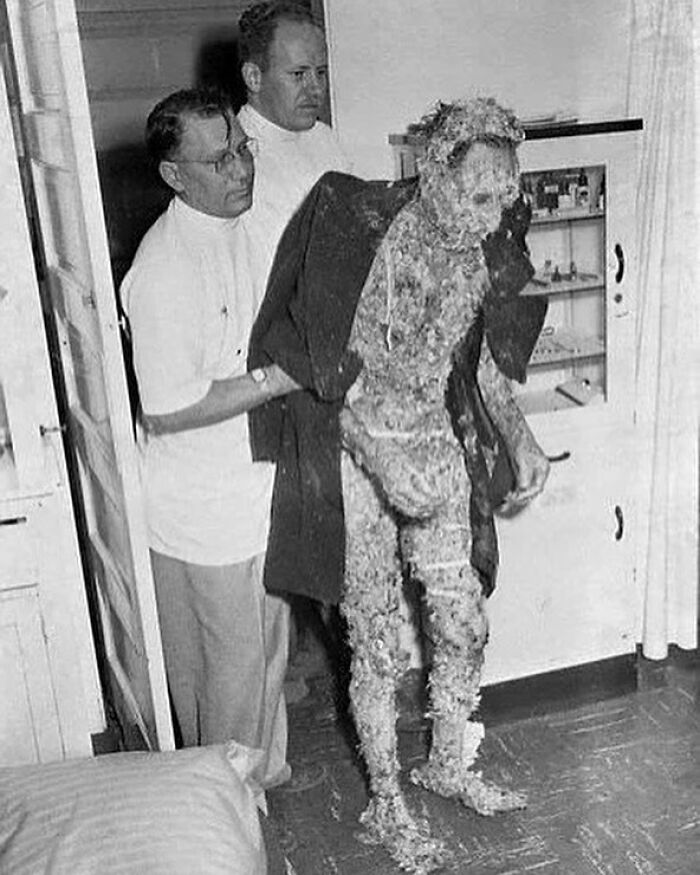
Image credits: historyfromeveryday
#17 Father And Son Crying As They Say Goodbye To Their Relatives Who Are Boarding A Boat To Buenos Aires In Search Of A Better Life During The Economic Hardship In Spain. The Photographer Manuel Ferrol Took This Picture In 1957 At The Port Of A Coruña
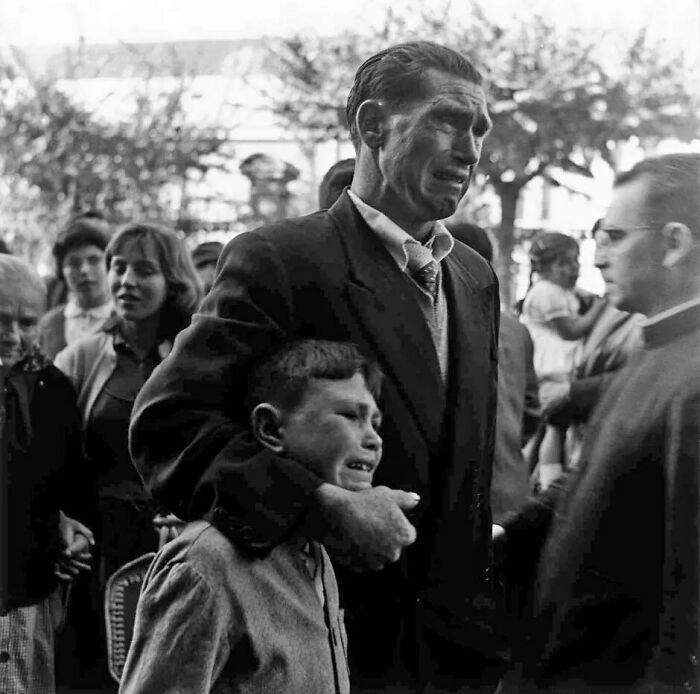
Image credits: historyfromeveryday
#18 Acrobat Luisita Leers, Taken Circa 1929
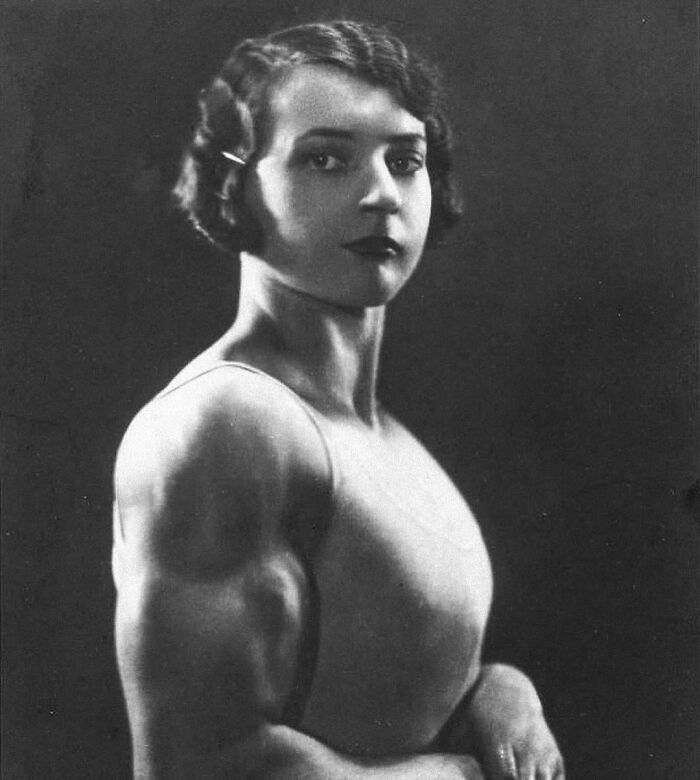
Image credits: historyfromeveryday
But learning obscure historical facts is not just for the sake of it. And not to throw it into someone’s face to impress them. “The more we can learn about our world and how it got to be the way it is, the better,” the creators of Footnoting History believe. “Life is full of nuance and history is the same way. It’s a great thing to understand the basic narrative of main events, but those main events didn’t happen in a vacuum.”
#19 Star Wars Cast Out Of Costumes In 1977
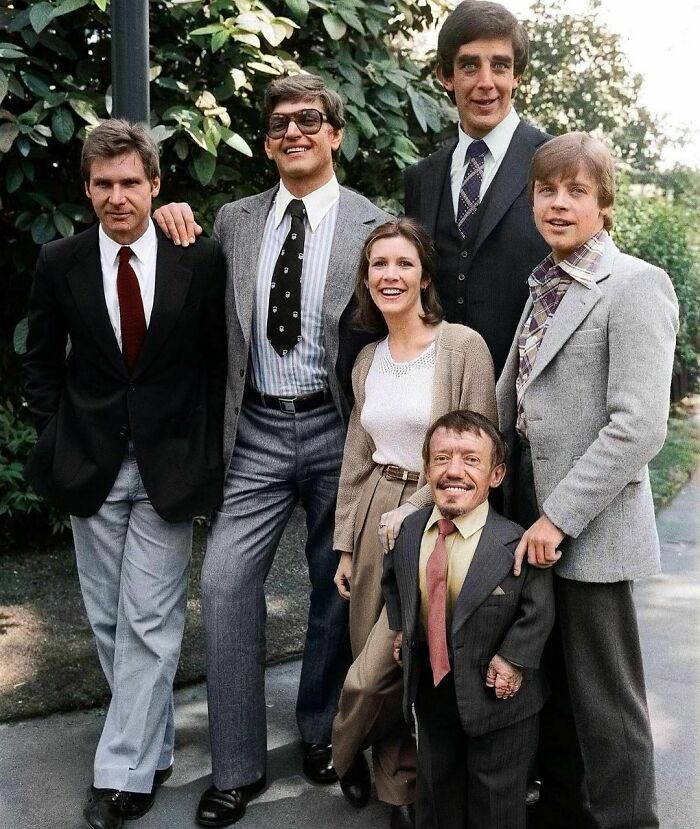
Image credits: historyfromeveryday
#20 Amasunzu Is An Elaborate Hairstyle Traditionally Worn By Rwandan Men And Unmarried Women, With The Hair Styled Into Crests
The hairstyle indicated social status, and men who did not wear Amasunzu were looked on with suspicion. The style was also worn by unmarried women after the age of 18–20 years, indicating that they are of marriageable age.
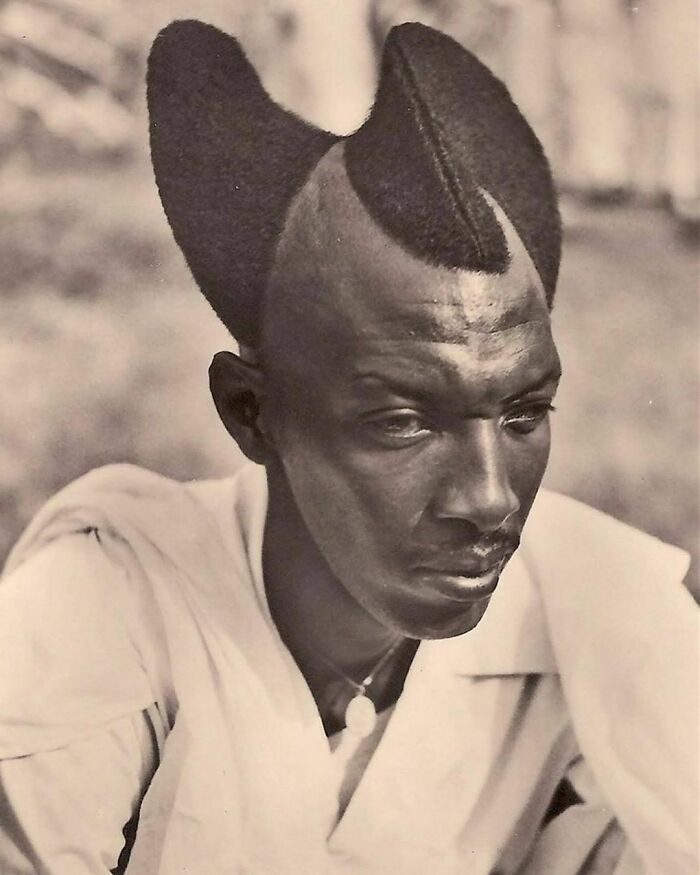
Image credits: historyfromeveryday
#21 A Geisha After Washing Her Hair, Before Styling It, In Japan In 1905
Geisha are a class of female Japanese performing artists and entertainers trained in traditional Japanese performing arts styles, such as dance, music and singing, as well as being proficient conversationalists and hosts. Their distinct appearance is characterised by long, trailing kimono, traditional hairstyles and oshiroi makeup. Geisha entertain at parties known as ozashiki, often for the entertainment of wealthy clientele, as well as performing on stage and at festivals
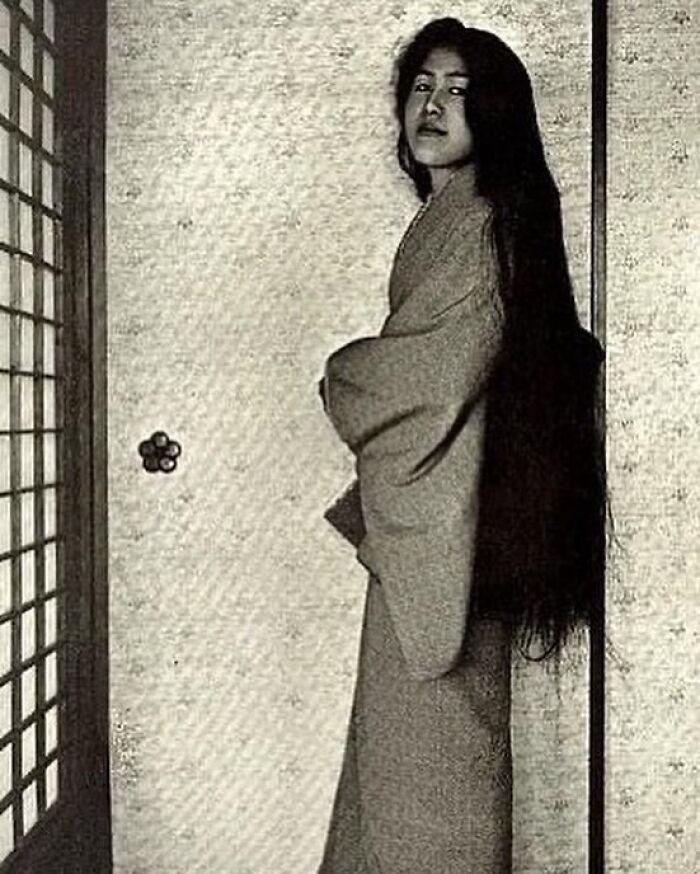
Image credits: historyfromeveryday
“You can learn a lot about the way people’s minds, societies, governments, and cultures work today by understanding their history in detail,” they add. “Plus, the aspects of history that are often the most hidden pertain to groups of oppressed people.”
There’s a famous saying, “History is written by the victors,” and if we want to get the full picture, we should seek more than what’s in history books. “It always matters,” Christine and Kristin say. “Everyone’s history is important and you become a more empathetic human being when you learn to appreciate how rich the histories are of all cultures.”
#22 Albert Einstein With His Step Daughter Margot Einstein Sitting On His Lap
They were attending the opening of the Jewish Pavilion at the World’s Fair in Flushing Meadows, New York in 1939.
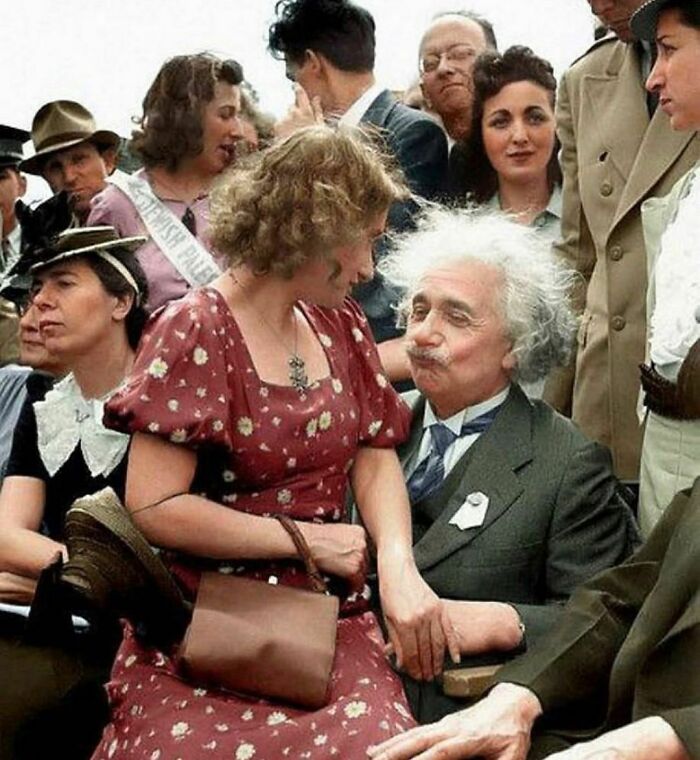
Image credits: historyfromeveryday
#23 A Portrait Of 10 Chiefs Taken In 1891
Their names from top left horizontally to bottom right:
1. Standing Bull
2. Bear who looks back running
3. Has the big white horse
4. White tail
5. Liver bear
6. Little thunder
7. Bull dog
8. High hawk
9. Lame
10. Eagle pipe
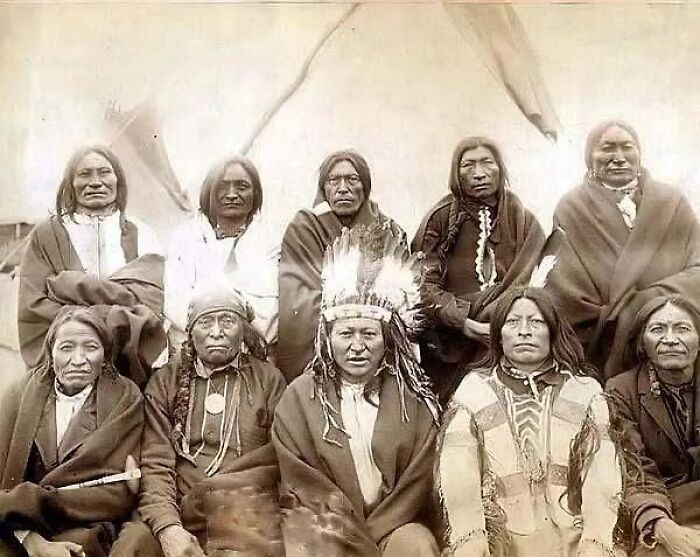
Image credits: historyfromeveryday
#24 Lunch Time At A California School In 1942 Taken Shortly Before Americans Of Japanese Descent (Including The Boy Pictured) Were Taken And Imprisoned In Concentration Camps Across The US For The Duration Of WW2
These actions were initiated by President Franklin D. Roosevelt via Executive Order 9066 following Imperial Japan’s attack on Pearl Harbor.
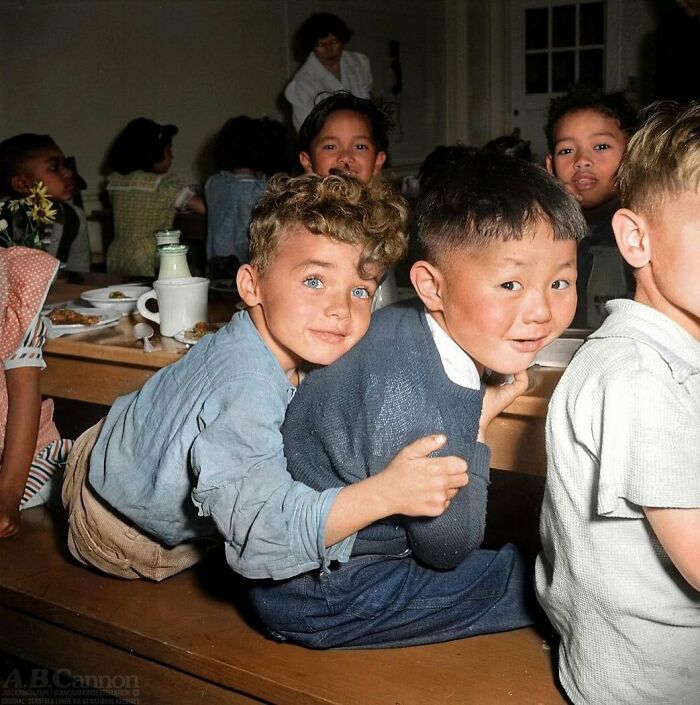
Image credits: historyfromeveryday
There’s a famous saying, “History is written by the victors,” and if we want to get the full picture, we should seek more than what’s in history books. “It always matters,” Christine and Kristin say. “Everyone’s history is important and you become a more empathetic human being when you learn to appreciate how rich the histories are of all cultures.”
#25 Young Couple In The 1940s
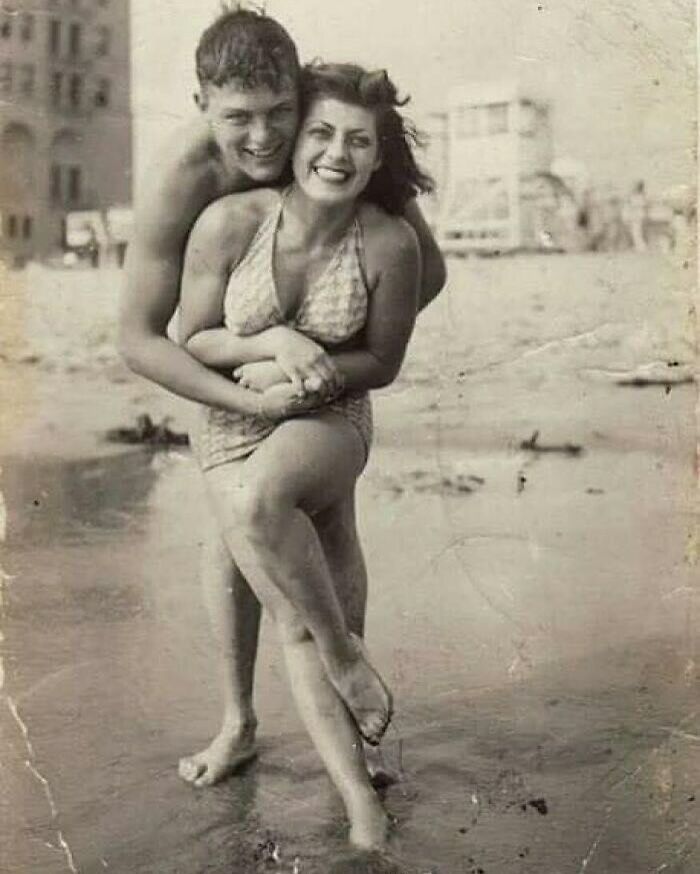
Image credits: historyfromeveryday
#26 Hand Belonging To An X-Ray Technician At The Royal London Hospital, Which Shows The Damage From Radiation Exposure, 1900
Every morning, they would calibrate the machines by taking an X-ray of their hands. During this time people didn’t know the dangers of radiation exposure so they thought it would be harmless to use their hands.
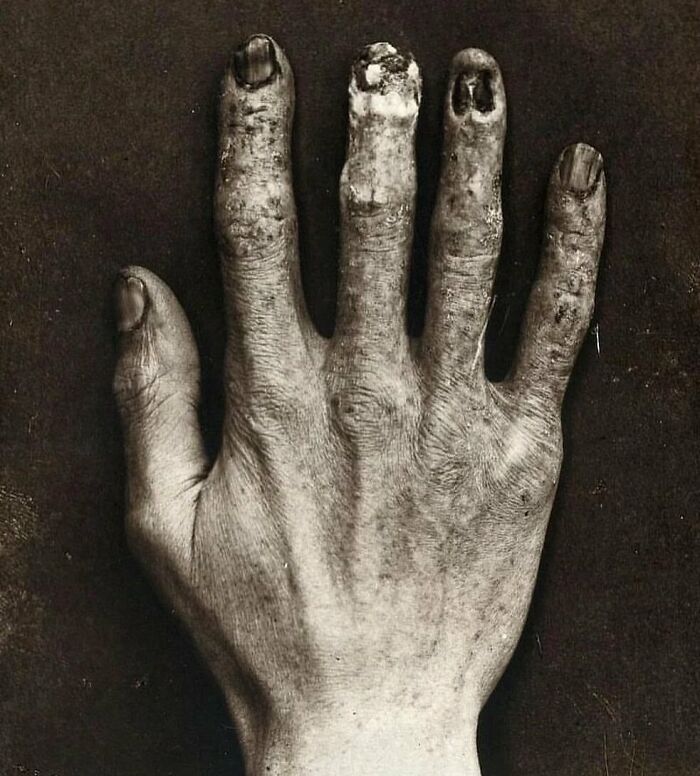
Image credits: historyfromeveryday
#27 18 Year Old Philip Meeting Then 13 Year Old Princess Elizabeth At The Royal Navy College In Dartmouth In 1939
He was studying there and was tasked to accompany the Royals who were on a visit. It was their first 1:1 meeting.
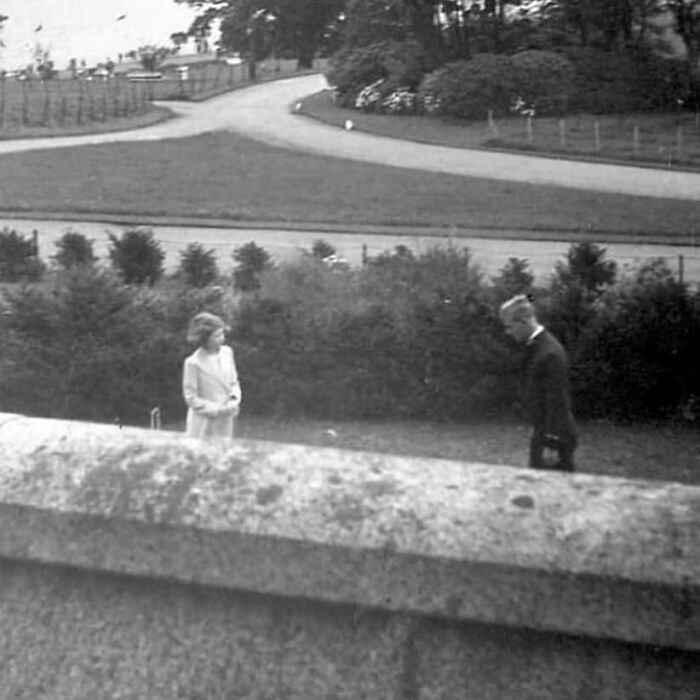
Image credits: historyfromeveryday
That’s why the pair can’t pick just one piece of history that’s the most important in their opinion. “We think it’s all important. We encourage people to always learn about the history of where they live and also the history of a culture outside of their own,” the creators of Footnoting History say.
#28 Then And Now, 1970 And 2024. A Family Recreates This Photo 54 Years Later In Salford, England

Image credits: historyfromeveryday
#29 Soviet War Veteran Next To An Eternal Flame On The Anniversary Of Victory Day, 1966
Victory Day (May 9th) is a holiday that commemorates the Soviet victory over Germany in 1945.
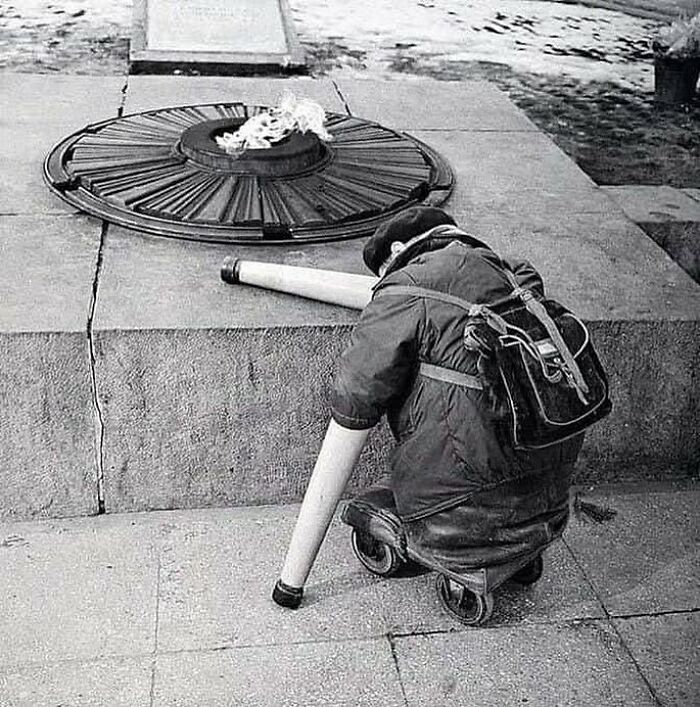
Image credits: historyfromeveryday
#30 Miner From England Sits Down For Dinner With His Wife After A Long Day At Work In 1937
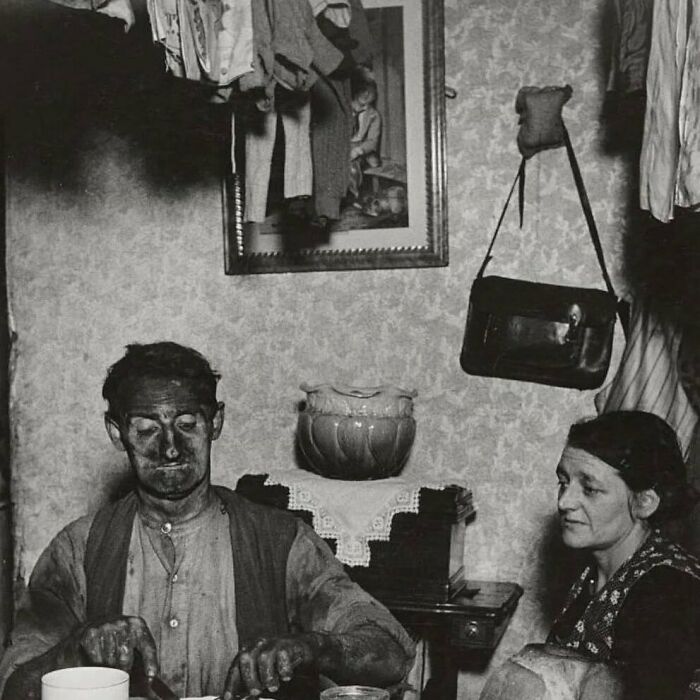
Image credits: historyfromeveryday
If you want to learn more obscure history facts, be sure to head to Footnoting History where all their episodes are available with captions. And if you’re a fan of using YouTube, check them out on their channel.
And which photographs from this list surprised you the most, Pandas? Let us know by upvoting your favorites and leave a comment down below!
#31 This Is How Passengers Would Board Airships. This Photo Shows British Airship R101 In 1930
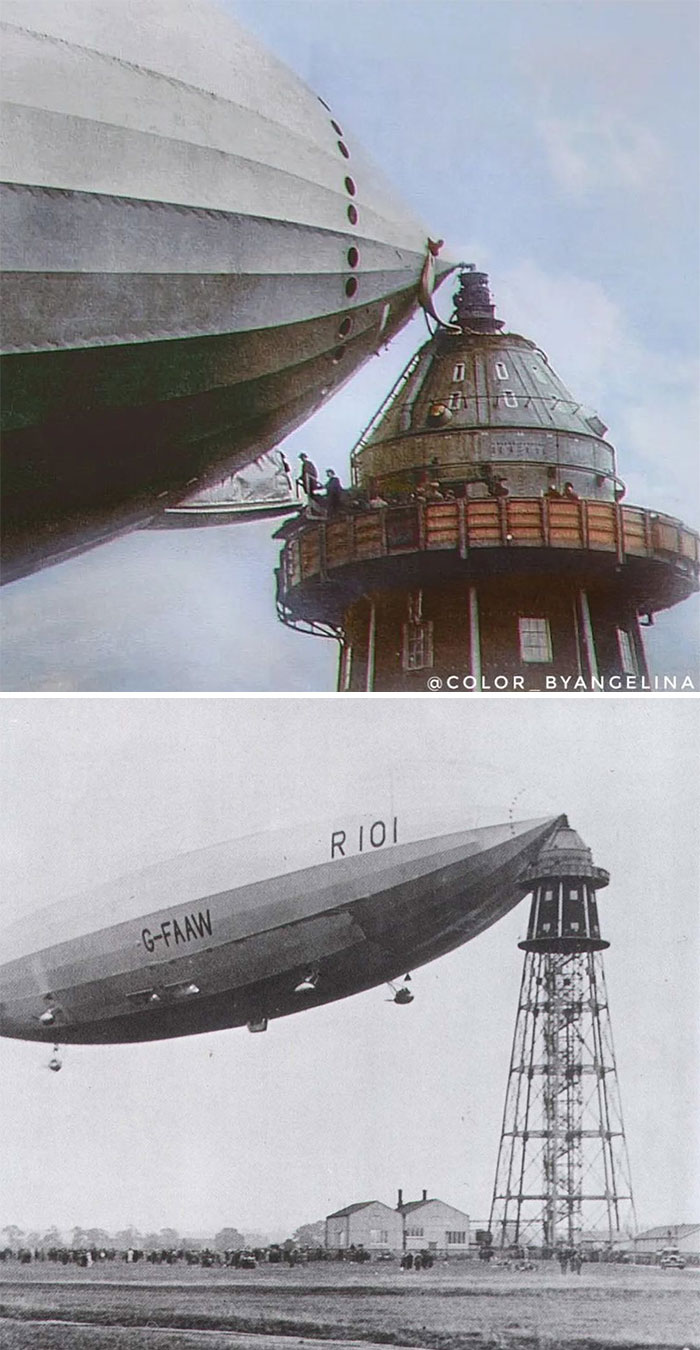
Image credits: historyfromeveryday
#32 Victorian Poverty, 1900
Annie, seven, and one year old Nellie, sit on a sacking outside their house in London. They were among ten children born to single mother Annie Daniels. Five of their siblings died in childhood.
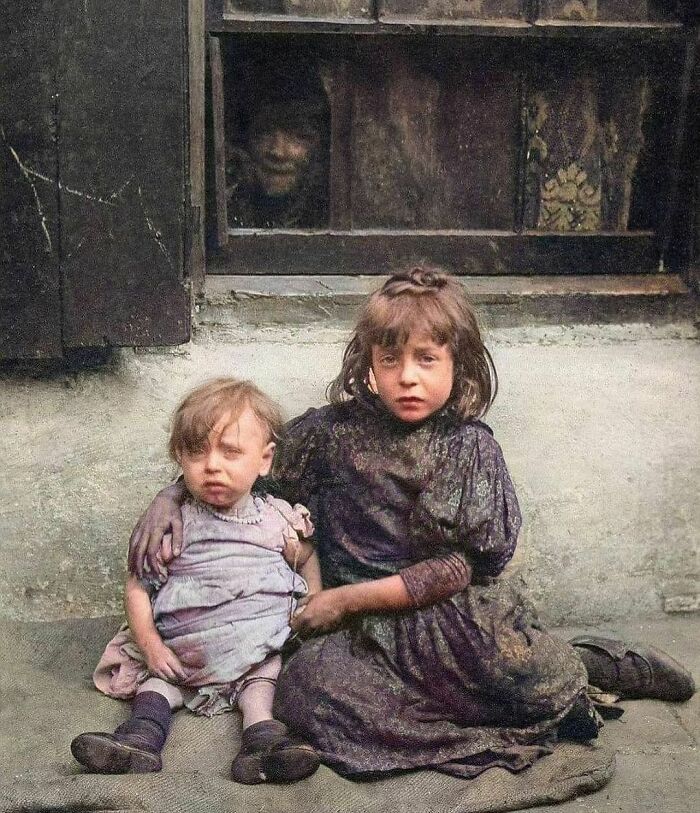
Image credits: historyfromeveryday
#33 A Mother With Her 8 Sons, All Served In Ww2, All Came Home
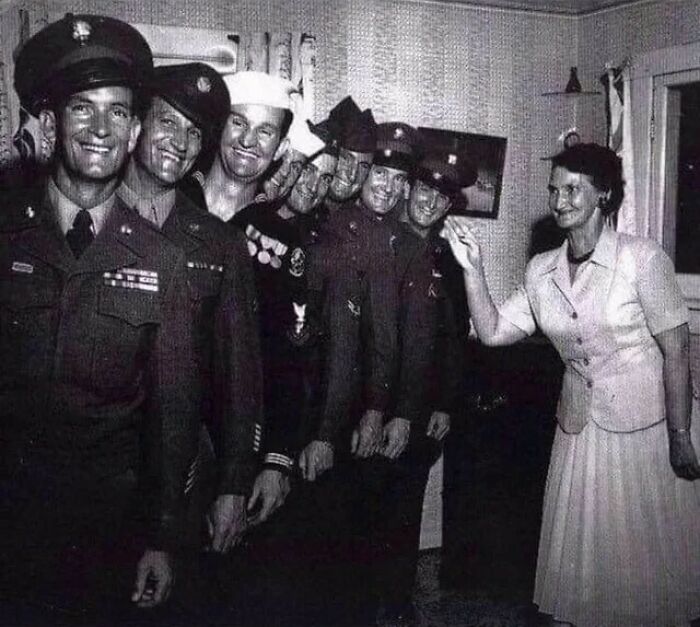
Image credits: historyfromeveryday
#34 Trapeze Artist Miss Mara Hitting An Arm Workout In 1958
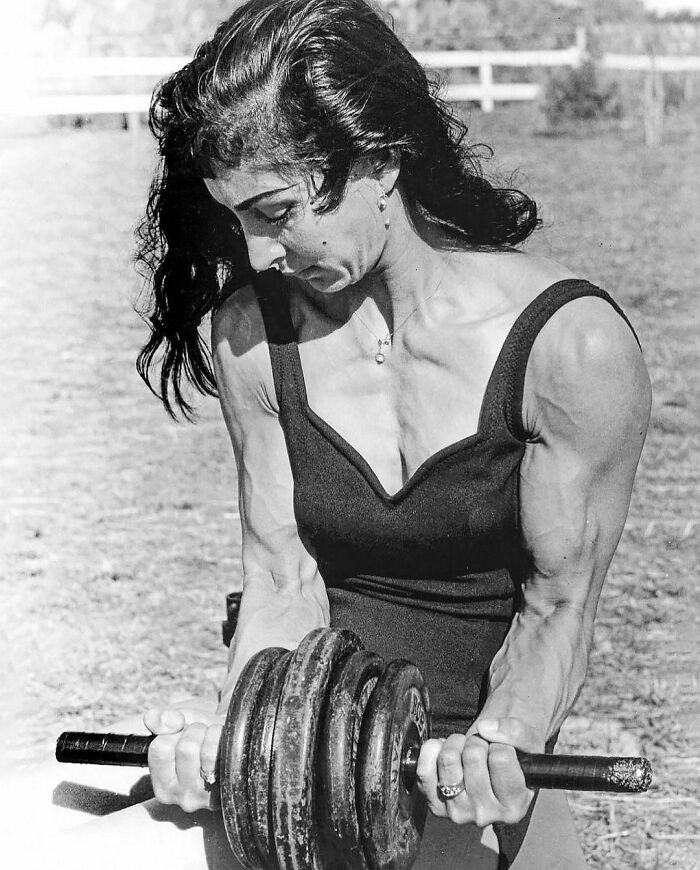
Image credits: historyfromeveryday
#35 A Schoolgirl Photographed At The 1968 May Day Demonstration In Lviv, Ukraine, By Pavliuk Ilya
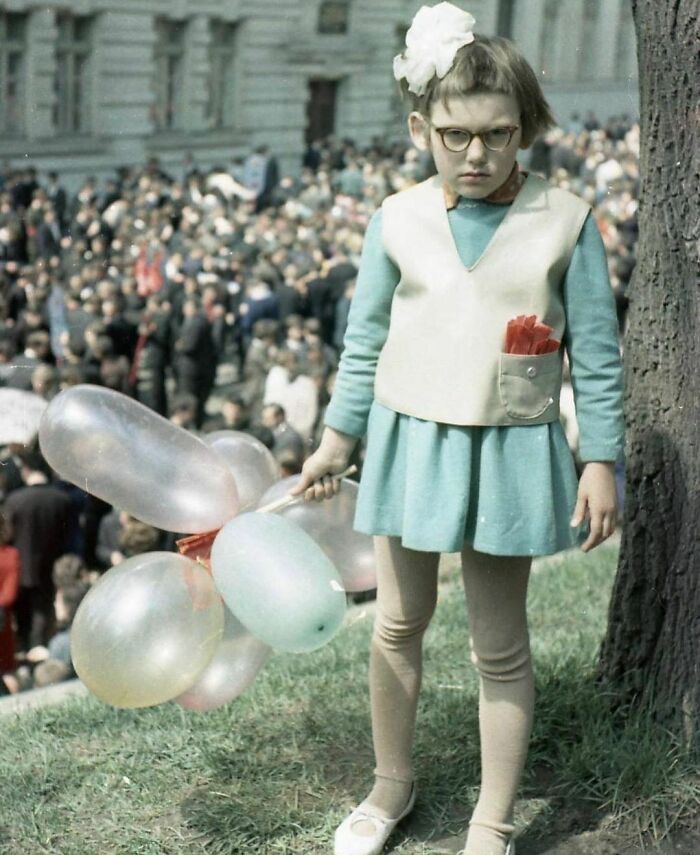
Image credits: historyfromeveryday
#36 Union (Left) And Confederate (Right) Veterans Meet For The Battle Of Gettysburg’s 50th Anniversary In 1913
Despite official concerns “that there might be unpleasant differences”, the peaceful reunion was repeatedly marked by events of Union–Confederate camaraderie.
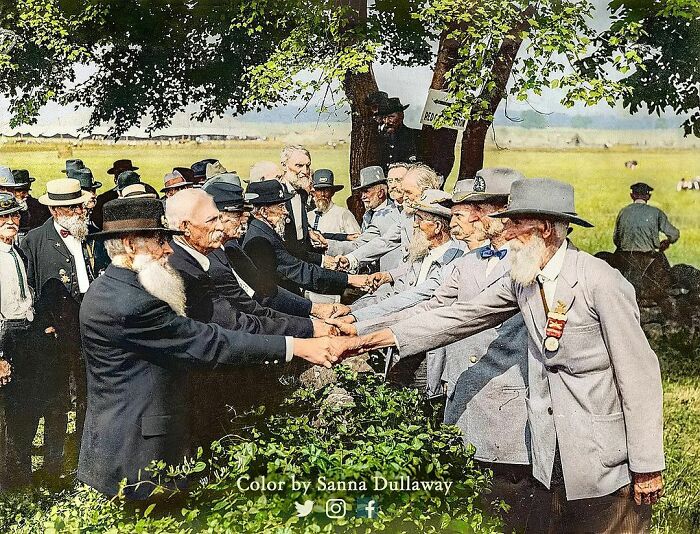
Image credits: historyfromeveryday
#37 Cambridge Students In The 1920s
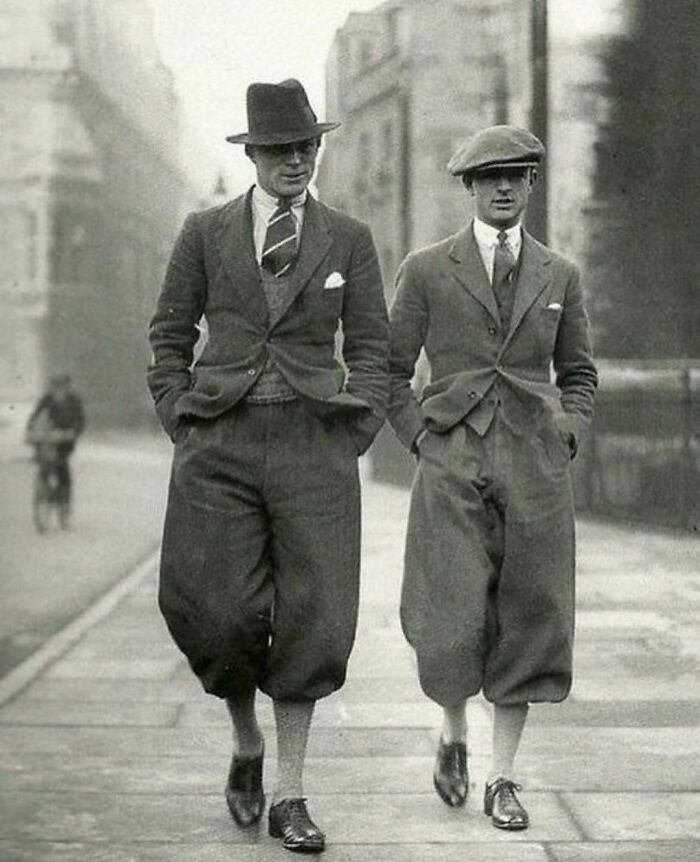
Image credits: historyfromeveryday
#38 This Is A Picture Of A British Veteran Of The Napoleonic Wars, Posing With His Wife
This photograph was taken around 1860, 45 years after the Battle of Waterloo.
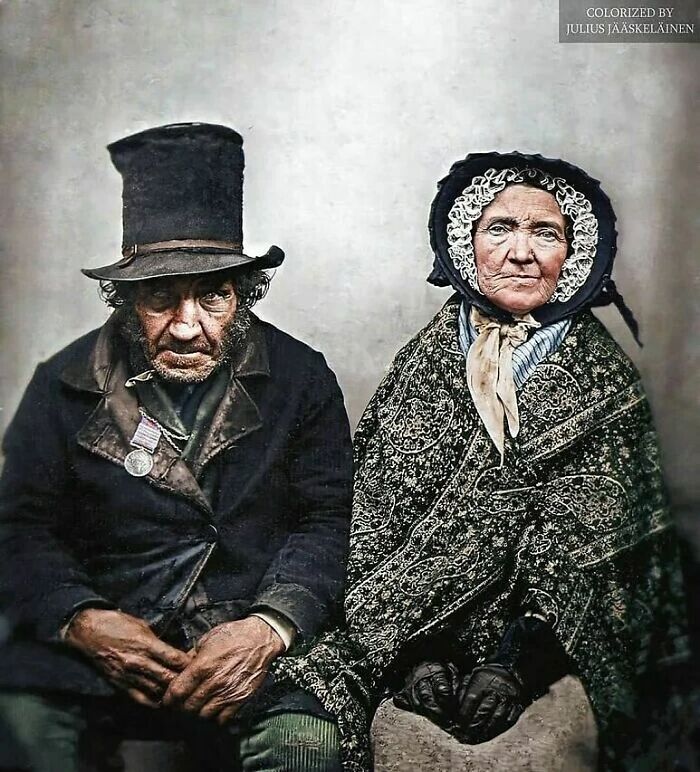
Image credits: historyfromeveryday
#39 A Dutch Couple Take A Stroll Along The Beach In The 1930s
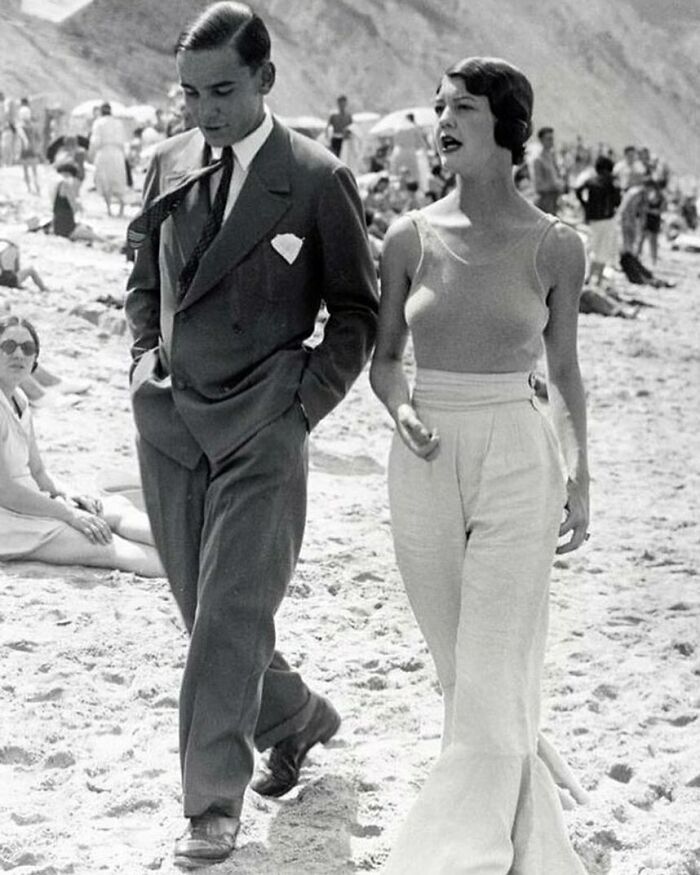
Image credits: historyfromeveryday
#40 Parents Taking Their Baby Ice Skating In The 1930s
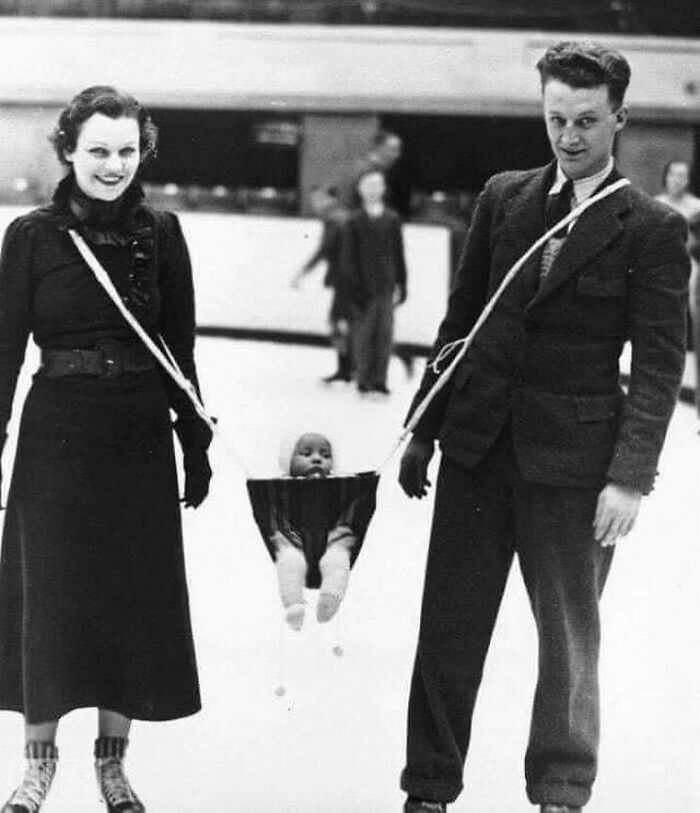
Image credits: historyfromeveryday
#41 Actress Marlene Dietrich Kisses A Soldier Returning From Ww2 In 1945
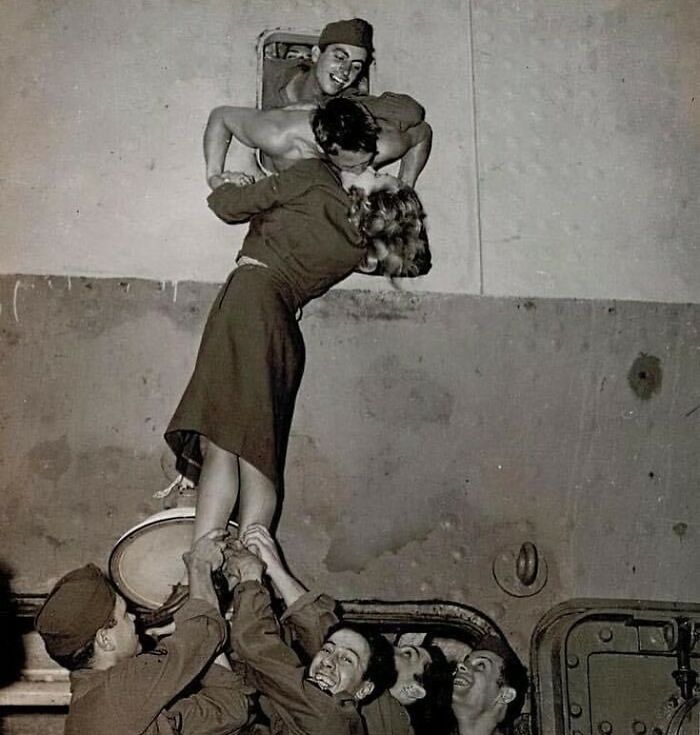
Image credits: historyfromeveryday
#42 Robert Mcgee, Scalped At The Age Of 14 In 1864
McGee was working as a teamster with H.C. Barret to transport a caravan of flour to Fort Union in New Mexico Territory. Whilst on the road, somewhere around Kansas, the wagon train was set on by a band of Brule Sioux Native Americans, resulting in the majority of the teamsters being tortured and killed. McGee was shot in the back, had two arrows put through him as well as 64 square inches removed from his scalp – all whilst he was still awake. His survival was miraculous. This photo was taken in 1890.
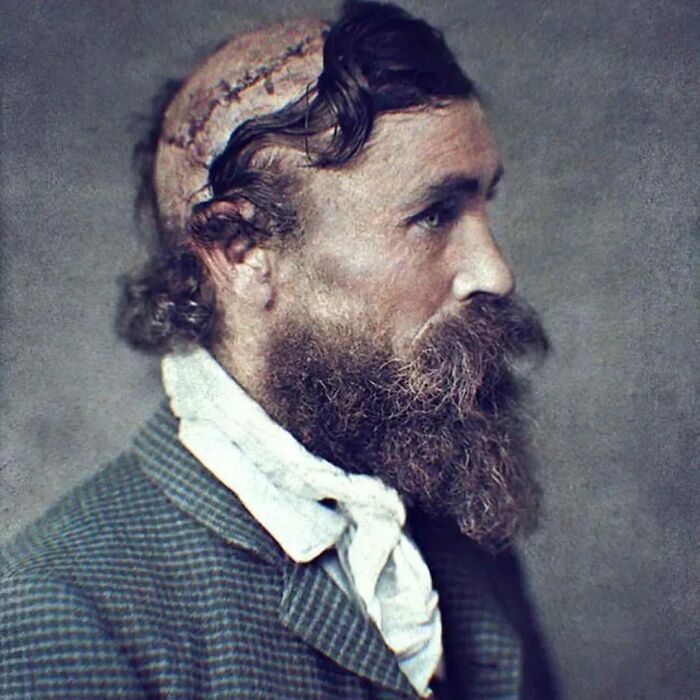
Image credits: historyfromeveryday
#43 Mongolian Shaman In 1909
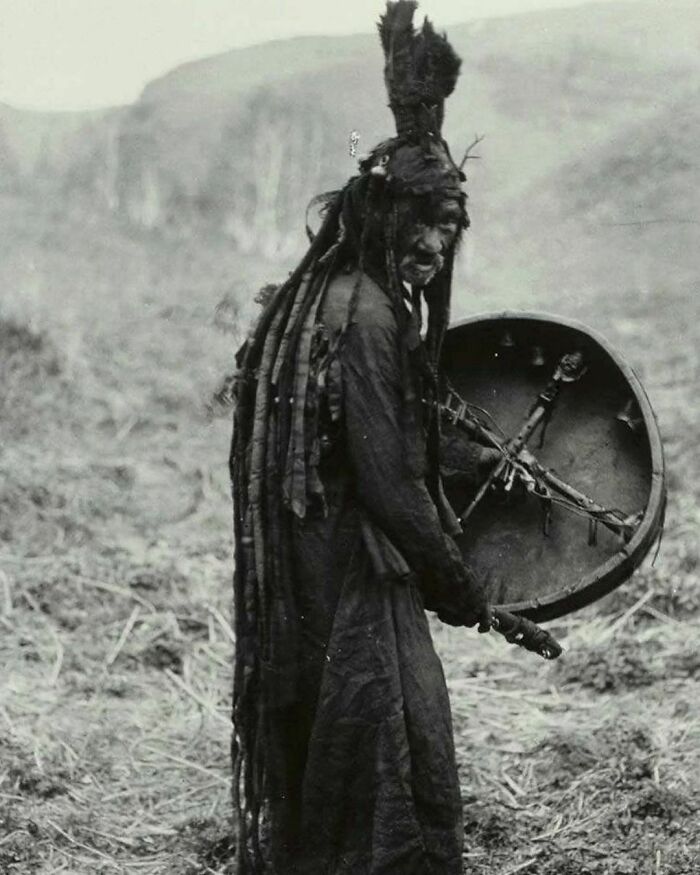
Image credits: historyfromeveryday
#44 Crow Native Americans Watch The Rodeo In Montana, 1941
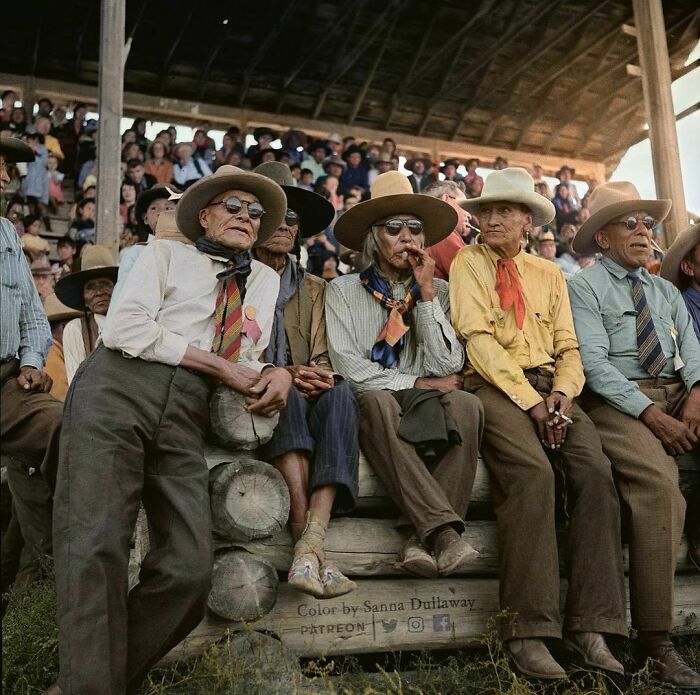
Image credits: historyfromeveryday
#45 The Original Michelin Man From 1898
The Michelin Man is white because rubber tires are naturally a grey/white color. It was not until 1912 that carbon chemicals were mixed into the white tires which turned them black. The change was structural, not aesthetic. By adding carbon, tires became more durable. Michelin also began reviewing restaurants so that more people would travel further distances in their cars to eat at these restaurants. This in turn would wear down their tires faster, and force them to buy more. The Michelin star system goes up to three and has the following criteria: 1 star: “A very good restaurant in its category”. 2 stars: “Excellent cooking, worth a detour”. 3 stars: “Exceptional cuisine, worth a special journey”.
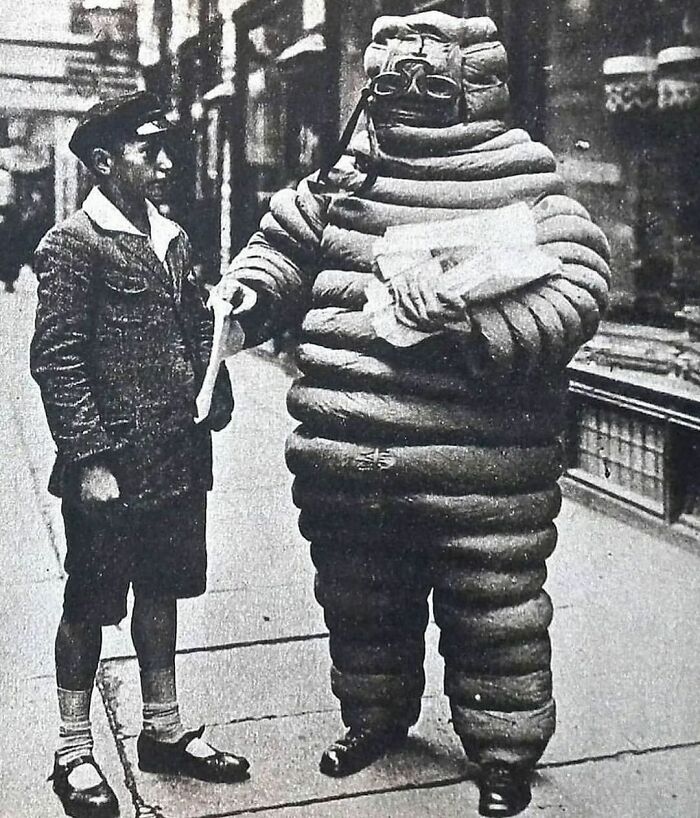
Image credits: historyfromeveryday
#46 In 1978 A Ferrari Was Discovered Buried In A Yard In Los Angeles After Children Playing In The Dirt Alerted Police About Something Shallowly Buried
The car had been reported stolen 4 years prior. Later it transpired that the owner, plumber Rosendo Cruz, apparently conspired to commit insurance fraud with the supposed thieves. They were supposed to take the Ferrari to a chop shop to be broken up for parts, but instead hid it, intending to dig it up later, and forgot where it was buried.
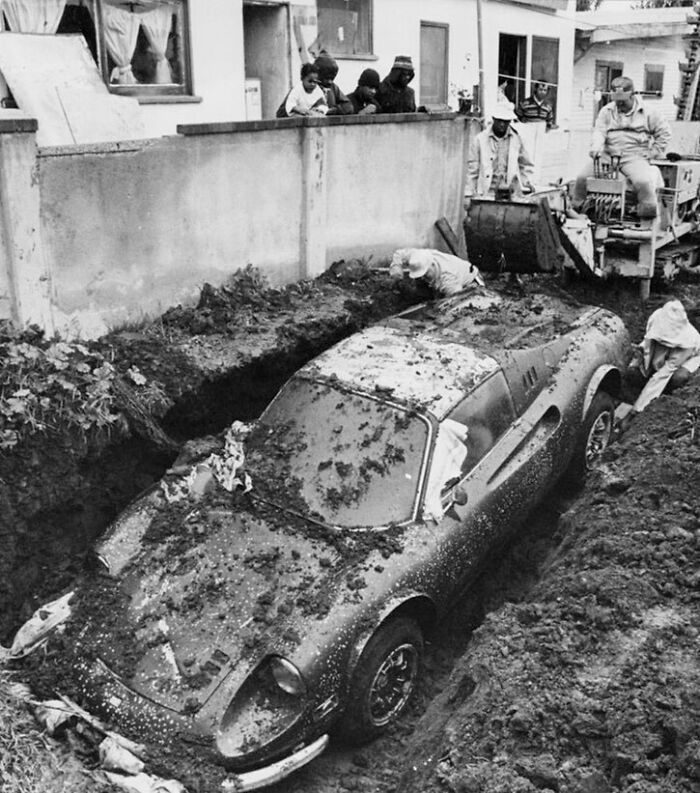
Image credits: historyfromeveryday
#47 Egyptian Street Vendor Selling Mummies In 1865
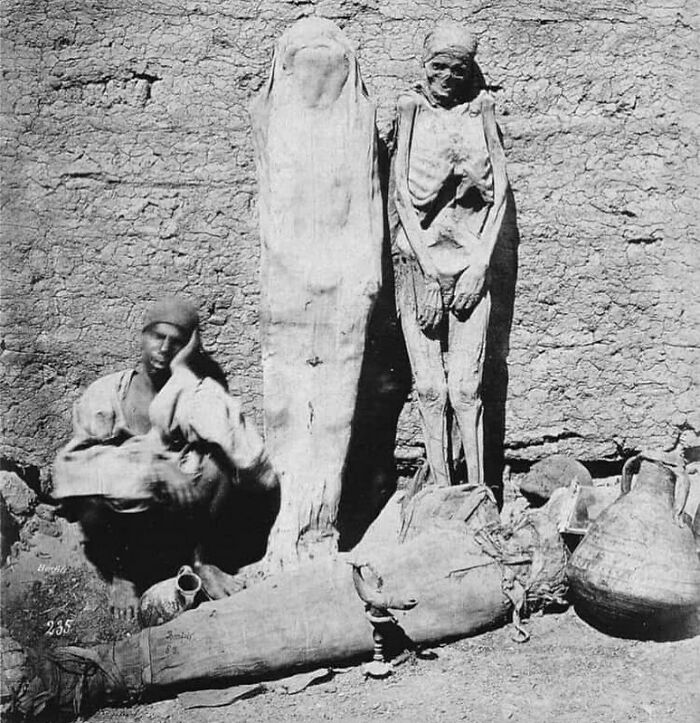
Image credits: historyfromeveryday
#48 Mary Ann Bevan (1874 – 1933) Was An English Woman Who Toured The Sideshow Circuit As “The Ugliest Woman In The World” After Her Appearance Drastically Changed Due To Developing Acromegaly
It leads to excess growth hormone which causes enlargement of the forehead, jaw, and nose.
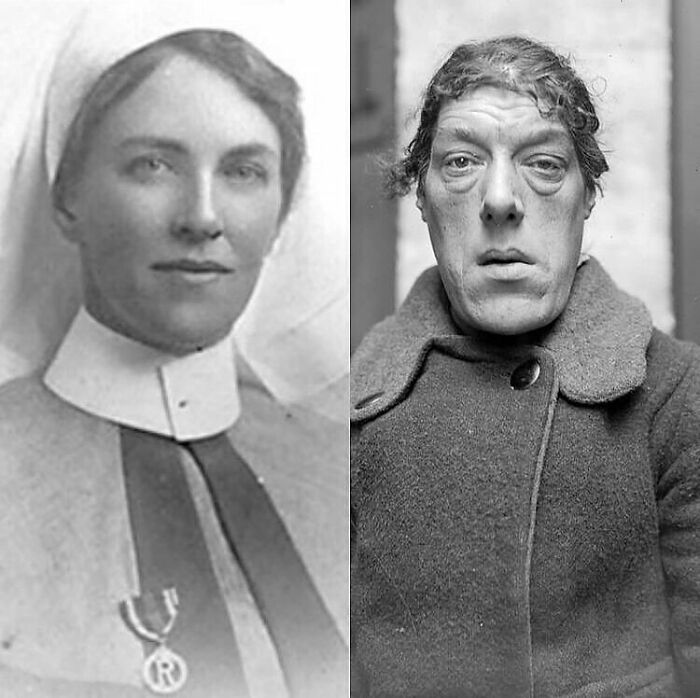
Image credits: historyfromeveryday
#49 Alice Doherty, Photographed Here As A Teenager With Her Family In The Early 1900s
She was born with hypertrichosis lanuginosa, which is an abnormal amount of hair growth in a certain area of the body
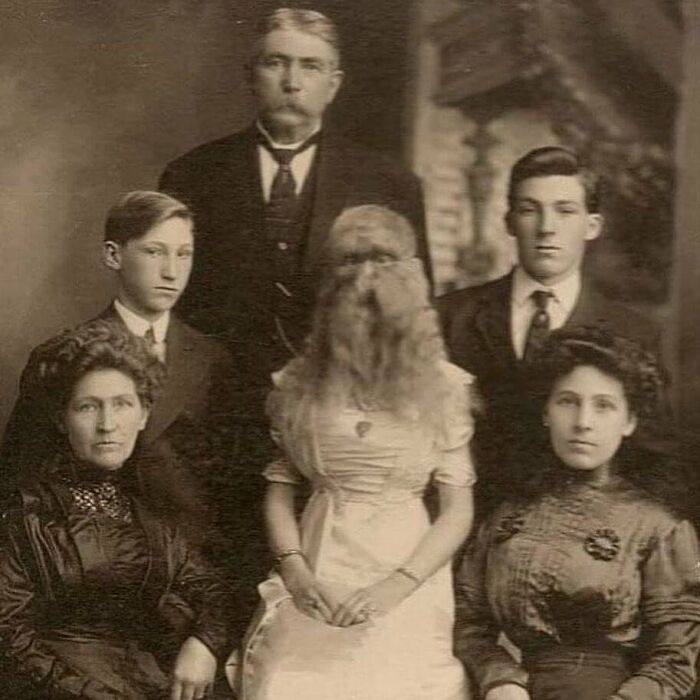
Image credits: historyfromeveryday
#50 Dutch Children After Arriving At Ellis Island, Circa 1900
From 1892 to 1954, nearly 12 million immigrants arriving at the Port of New York and New Jersey were processed there under federal law.
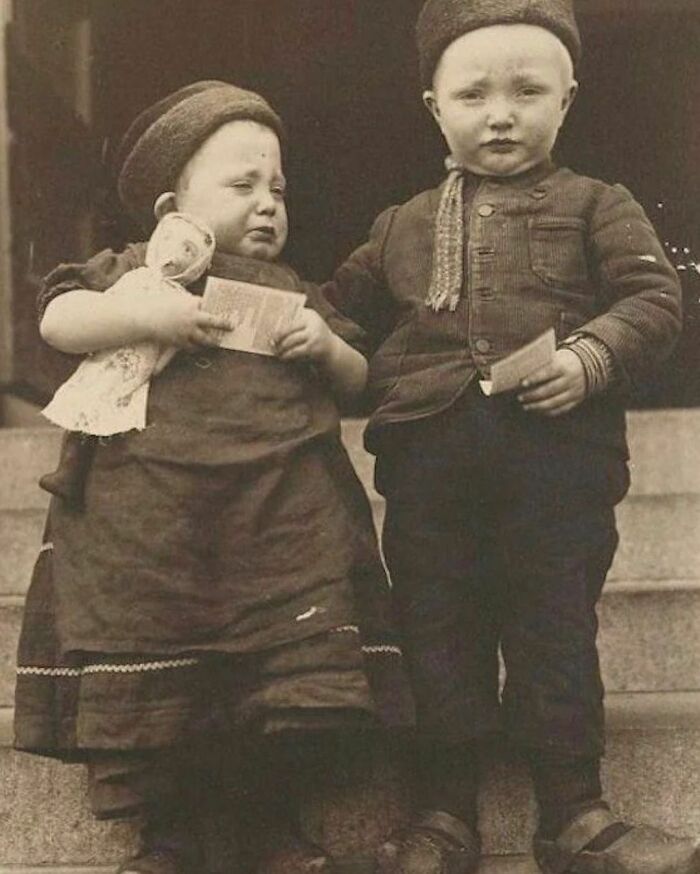
Image credits: historyfromeveryday
